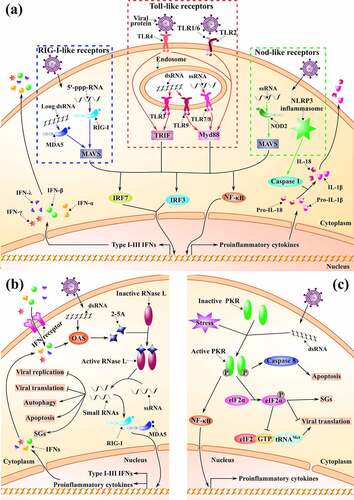Figures & data
Table 1. Anti-ssRNA viral mechanisms targeted by RNases
Table 2. Main available drugs or candidates against enveloped ssRNA viruses
![Figure 1. The Viral Life Cycle. The life cycle of positive single-strand RNA [(+)ssRNA], negative single-strand RNA viruses [(-)ssRNA] and also HIV are indicated. Normally, viruses firstly enter into the host cell by either fusion or endocytosis, then the viral genome is replicated and the viral polyproteins are translated within the cytoplasm. Many (+)ssRNA viruses can replicate and be transcribed in special DMV. Finally, virion assembly and release takes place. The life cycle for (+)ssRNA viruses are shown in red color and for (-)ssRNA in blue. For HIV, the genome will be reverse transcribed into dsDNA and then integrated into the host genome, as shown in light blue color](/cms/asset/383079fb-3850-40b3-b00e-d528107666e9/kvir_a_1871823_f0001_oc.jpg)

